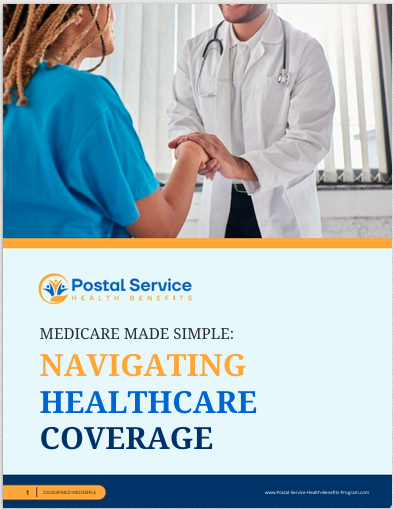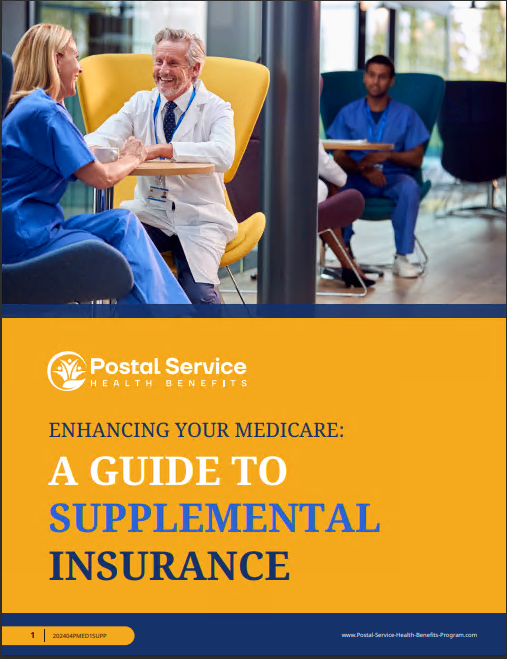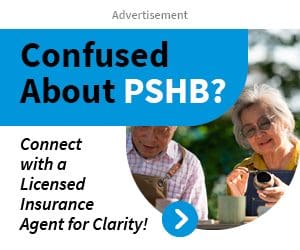Key Takeaways
-
Eligibility for Postal Service Health Benefits (PSHB) depends on your role with the USPS, Medicare enrollment, and specific timelines.
-
Understanding your PSHB options can help you make informed decisions during enrollment periods and ensure your healthcare needs are covered.
Who Can Join PSHB?
The Postal Service Health Benefits (PSHB) program is tailored specifically for USPS employees, retirees, and their eligible family members. If you’re wondering whether you qualify, here’s the breakdown:
Active USPS Employees
If you’re currently employed by the USPS, you’re eligible for PSHB. During the Open Season, you can enroll, switch plans, or adjust coverage levels to better suit your needs.
Retirees
If you’ve retired from the USPS, you remain eligible for PSHB as long as you meet certain criteria. For those who retired before January 1, 2025, maintaining health benefits is straightforward. If you’re retiring this year or later, Medicare enrollment becomes an important consideration.
Eligible Family Members
Your spouse and dependent children can also benefit from PSHB. Coverage for children typically extends until they turn 26, and there are provisions for disabled dependents beyond this age.
Medicare-Enrolled Individuals
For Medicare-eligible retirees, enrollment in Medicare Part B is generally required to maintain PSHB coverage. This integration helps reduce out-of-pocket expenses and unlock additional benefits.
Key Enrollment Periods
Understanding enrollment timelines is crucial to ensuring continuous coverage. Missing deadlines can lead to lapses in healthcare access or penalties.
Open Season
The annual Open Season for PSHB runs from mid-November to mid-December. This is the primary window to:
-
Enroll in a PSHB plan
-
Change your existing plan
-
Add or remove dependents
Changes made during Open Season take effect on January 1 of the following year.
Special Enrollment Periods (SEPs)
Certain life events trigger Special Enrollment Periods, allowing you to make changes outside the regular Open Season. These events include:
-
Marriage or divorce
-
Birth or adoption of a child
-
Losing other health coverage
SEPs provide flexibility but require timely action, usually within 60 days of the qualifying event.
Medicare Enrollment Periods
For retirees integrating Medicare with PSHB, understanding Medicare’s enrollment rules is essential. Missing your Initial Enrollment Period (IEP) for Medicare Part B could result in late penalties and impact your PSHB coverage.
How PSHB and Medicare Work Together
If you’re eligible for Medicare, combining it with PSHB can provide comprehensive healthcare coverage. Here’s how the two programs align:
Waived or Reduced Costs
Many PSHB plans waive or reduce deductibles, coinsurance, and copayments for enrollees who also have Medicare Part B.
Integrated Prescription Drug Coverage
Your PSHB plan includes prescription drug coverage, often enhanced for those with Medicare Part D. The introduction of a $2,000 out-of-pocket cap for prescriptions in 2025 makes this integration even more valuable.
Automatic Enrollment in Part D
Medicare-eligible retirees automatically receive prescription drug coverage under a Medicare Part D Employer Group Waiver Plan (EGWP) through their PSHB plan. This ensures seamless coordination between the two programs.
Costs and Contributions
PSHB costs are shared between enrollees and the federal government, with about 70% of premiums covered by employer contributions. Here’s what you need to know:
Premiums
Premiums vary based on plan type and coverage level:
-
Self Only: Ideal for individual coverage.
-
Self Plus One: Designed for you and one dependent.
-
Self and Family: Covers you and multiple dependents.
Deductibles and Coinsurance
Deductibles range from $350 to $500 for low-deductible plans and $1,500 to $2,000 for high-deductible options. Coinsurance percentages depend on whether you use in-network or out-of-network services.
Out-of-Pocket Maximums
PSHB plans have caps on out-of-pocket expenses, ensuring that your costs don’t spiral out of control. In 2025, these limits make budgeting for healthcare more predictable.
What Happens If You Miss Enrollment?
Missing enrollment deadlines can have serious implications. For retirees, failing to enroll in Medicare Part B when required could mean losing PSHB coverage entirely. Active employees and their families may face delays in accessing benefits.
Late Enrollment Penalties
For Medicare, penalties can add up over time. Enrolling late in Part B results in a 10% increase in premiums for each 12-month period you were eligible but didn’t enroll.
Coverage Gaps
Missing the Open Season means waiting another year for changes unless a Special Enrollment Period applies. Gaps in coverage could leave you exposed to high healthcare costs.
Tips for a Smooth Enrollment Experience
Navigating PSHB enrollment doesn’t have to be overwhelming. Follow these tips to make the process seamless:
Review Your Options Early
Take time to understand the plans available to you. Compare coverage levels, premiums, and out-of-pocket costs to determine the best fit.
Mark Key Dates
Set reminders for Open Season and any Special Enrollment Periods. Missing these windows can result in delays or penalties.
Verify Medicare Enrollment
If you’re a retiree, ensure you’re enrolled in Medicare Part B before making PSHB decisions. This step is crucial for accessing the full range of benefits.
Keep Documentation Handy
Have your employment and retirement records, Medicare details, and dependent information readily available to streamline the application process.
Preparing for the Transition to PSHB
If you’re moving from the Federal Employees Health Benefits (FEHB) program to PSHB in 2025, here’s what to expect:
Automatic Enrollment for Some
If you’re currently enrolled in FEHB, you’ll be automatically transitioned to a comparable PSHB plan. However, reviewing your options during Open Season is still recommended.
New Requirements for Retirees
Medicare-eligible retirees must enroll in Part B to maintain PSHB coverage. Be proactive to avoid disruptions.
Communication from USPS
Expect detailed information from USPS about your PSHB plan, costs, and benefits. Keep an eye out for these notices to stay informed.
Why PSHB Is Worth It
PSHB offers tailored benefits and cost-sharing that make it a valuable choice for USPS employees and retirees. With the government covering a significant portion of premiums and new enhancements like prescription drug caps, PSHB ensures access to high-quality care.
Comprehensive Coverage
From hospital stays to routine check-ups, PSHB plans are designed to meet diverse healthcare needs. The integration with Medicare only enhances this coverage.
Financial Predictability
With set premiums and out-of-pocket limits, PSHB helps you budget for healthcare expenses without unexpected surprises.
Family-Friendly Options
Coverage for spouses and dependents ensures your family’s health needs are met, making PSHB a comprehensive solution for USPS households.
Make the Most of Your PSHB Benefits
Now that you’ve explored eligibility, costs, and enrollment timelines, it’s time to act. Whether you’re an active employee, a retiree, or a family member, staying proactive ensures you maximize your healthcare benefits. Don’t wait—plan ahead and secure the coverage you deserve.







